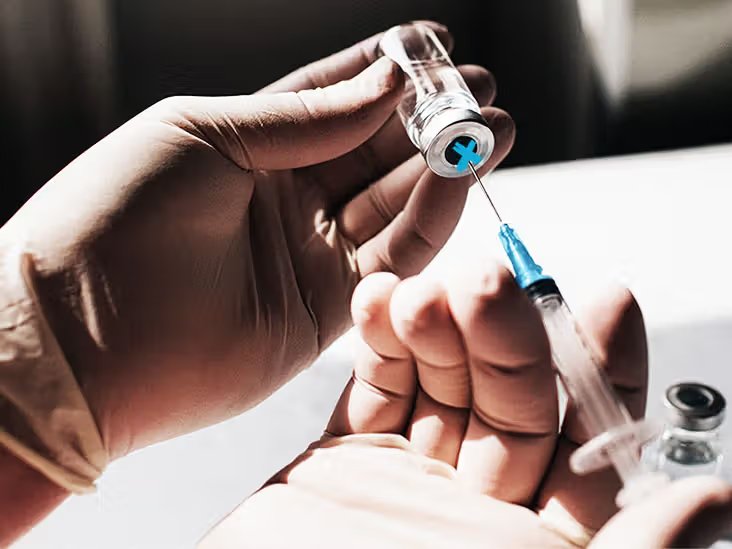AbbVie’s BOTOX® Achieves Primary and Secondary Endpoints in Phase 2 ELATE Trial for Essential Tremor
07 October 2025 | Tuesday | News

Image Source : Public Domain
- OnabotulinumtoxinA (BOTOX®) met the primary endpoint in the Phase 2 trial, demonstrating a statistically significant improvement from baseline in the Tremor Disability Scale-Revised (TREDS-R) total unilateral score compared to placebo.
- The trial also met all six secondary endpoints.
- Results from safety analyses were generally consistent with the well-established safety profile of onabotulinumtoxinA.
AbbVie announced positive topline results from the Phase 2 ELATE trial evaluating the safety and efficacy of onabotulinumtoxinA (BOTOX®) compared to placebo for the treatment of upper limb essential tremor.
The study met its primary endpoint, demonstrating statistically significant improvements in the Tremor Disability Scale-Revised (TREDS-R) of onabotulinumtoxinA compared to placebo at week 18. Specifically, the onabotulinumtoxinA group showed a greater reduction in TREDS-R total unilateral score compared to placebo, with scores of -2.61 versus -1.61, (p=0.029).1 The study also met all six secondary endpoints.2
"Essential tremor is a progressive neurological condition that affects millions worldwide and often results in unsatisfactory outcomes with current treatments," said Daniel Mikol, M.D., Ph.D., vice president, neuroscience development, AbbVie. "No new pharmacological treatments have been approved in the U.S. for essential tremor for more than 30 years. These results represent a significant advance and demonstrate further proof of mechanism for a neurotoxin as a potential treatment option to help patients and healthcare providers manage this challenging condition."
Safety results were generally consistent with the well-established safety profile of onabotulinumtoxinA. Muscular weakness was the most common adverse event, with reported rates of 24.5% in the onabotulinumtoxinA group versus 2.3% in the placebo group. Instances were localized and transient and most were classified as mild or moderate in nature.1
Results from the study will be presented at the International Congress of Parkinson's Disease and Movement Disorders® on October 8, 2025.
The use of BOTOX® for essential tremor is not approved by the U.S. Food and Drug Administration (FDA) or any other global regulatory authority and its safety and efficacy have not been evaluated by regulatory authorities.
Most Read
- How Health Systems Are Reshaping Drug Adoption, Partner Models, and Market Access in 2026
- Top 25 Biotech Innovations Redefining Health And Planet In 2025
- The New AI Gold Rush: Western Pharma’s Billion-Dollar Bet on Chinese Biotech
- Top 25 Biotech & Biopharma Leaders in Sustainable Innovation, 2025
- China’s Biopharma Dealmaking Surges in H1 2025, Driven by Record Licensing and Oncology Focus
- Chikungunya in China: How a “Forgotten” Arbovirus Found the Perfect Storm
- How Innovation Gaps in Biopharma Raise New Safety Concerns
- Smart Implants and the Future of Musculoskeletal Injury Treatment
- How Ethical Gaps in Psychiatry Could Undermine Biopharma Progress
- The Evolving Landscape of Women’s Health Innovation in the Asia-Pacific
- Using NLP-Driven Decision Support in Emergency Health Assistance
- Taiwan Steps Into the Global Spotlight With a New Cancer Therapy
- The Role of Unique Device Identification (UDI) in Tracing Medical Device Safety
- The Importance of a Patient’s Mental Health During Clinical Trials
Bio Jobs
- The State of Biotech and Life Science Jobs in Asia Pacific – 2025
- Avantor’s New CEO Ligner Aims to Unlock Global Potential and Deliver Shareholder Value
- AstraZeneca Commits $50 Billion to U.S. Expansion by 2030 in Biggest-Ever Global Investment
- Thermo Fisher, SAMRC, and South Africa’s Department of Science and Innovation Launch CATIR to Nurture Next-Gen Scientists
- Cube Biotech Appoints Former Sartorius CEO Dr. Joachim Kreuzburg to Board of Directors
- FDA’s AI Transition Marks a Turning Point in Drug Review: Industry Faces Pressure to Adapt Amid 20% Workforce Cut
- WuXi XDC Completes Mechanical Build of Singapore Bioconjugate Manufacturing Hub
News
Editor Picks











